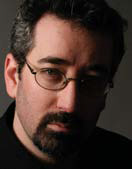Maintaining Proper Color Temperature While On the Go

Jay Holben
LOS ANGELES—On a tangential topic for television lighting, this month I wanted to talk about color temperature— not just the basics of “tungsten” and “daylight”—but how we dealt with rapidly varying color temperatures while shooting a reality show. For the last 25 days I’ve been traveling through Canada and the United States doing home visits for a show I’m producing and directing called “My Hollywood.” The show is a documentary-style reality where we follow kids (ages 8-17), who have dreams of “making it” in Hollywood. My two primary cameras are the Panasonic AG-HPX500 and the AG-HPX370, both shooting DVCPRO HD. I operated a third camera, a JVC GY-HM100U.
We’re constantly on the move: indoors, outdoors, day, night, fluorescents, tungsten, daylight, neon, you name it, we’ve got it captured in the show. Following kids from interiors to exteriors, kitchens to hallways to bedrooms, riding in cars, in restaurants, out at night begs the question: “When you’re really running and gunning, how do you keep up with the color temperature?”
THE INDISPENSIBLE EXPODISC
For “My Hollywood,” I gave my director of photography, Benjamin Molyneux, an ExpoDisc, one of my favorite never-leave-home-without-it tools. It’s a precisely calibrated piece of semi-opaque plastic that only allows 18 percent of light to transmit through it in a perfectly neutral gray. You pop the ExpoDisc in front of the lens, point the camera at your primary light source (or mixed source) and white balance through the card: Viola! You’ve got the most accurate white balance I’ve ever found.
But... that takes time. And we only had one ExpoDisc on the show so Ben would have to balance his camera and then hand it off to our B camera operator, Rachel Lippert, so she could balance hers. Because the controls on the JVC are pretty funky (an iris control I liken to “Flick-my-Bic-Exposure- Control”), and because I was running with the small cam on a SteadyPod— which was awkward when adjusting the settings on the fly—I often ran in the dreaded “auto” for focus, iris and white balance. My little C cam was just the frosting to Ben and Rachel’s cake, however.

Camera operator Rachel Lippert (R) shoots vocal coach Sergio Sanchez (L) while cast member Jada Kaufman and her mother, Susie, sing along. The Litepanels Croma stands ready on Lippert’s AG-HPX370 camera. When we could, the ExpoDisc was the way to go; great neutral color balance, even in mixed situations. When we couldn’t, things got a lot trickier. Discussing the look and our efficiency with Ben, we decided on a camera preset of 3200K (Tungsten) with an “A” white balance at about 4200 and the “B” balance at 55/5600. This gave us three quick looks for when we were really on-the-go: indoor, mixed and outdoor, which was often enough to keep us rolling in mixed situations, or moving around a house with a shockingly varied mix between dark tungsten-lit areas and near-nuclear daylight areas.
COLOR CHOICES
Color balance is further complicated by the fact that the HPX500 has a black-and-white viewfinder. This required Molyneux to be hyper diligent with his color choices as cameras moved from one area to another on a continual basis.
The professional video industry's #1 source for news, trends and product and tech information. Sign up below.
Augmenting further, we carried a set of Litepanels Croma fixtures, which are small LED panels with both 3200K Tungsten LEDs and 5600K Daylights. I went with the Cromas as they’re the lightest dual-temperature LED fixtures I’ve found with very accurate color rendition with very little to no green content. They’re simple to use with one knob to adjust brightness and one knob to adjust the blend between 3200K and 5600K. These came in great handy on both A and B cameras to add a little fill when things got too dark. They run on six AA batteries, which is really convenient—although the fact that they burn through the batteries isn’t so convenient. Worse, when the batteries get low, the lights flash on and off, not just dim; a sure-fire way to ruin any take.
Running them sparingly—and not at 100 percent (which was rarely needed)— kept them running on a set of batteries pretty much all day. What we really needed was LitePanel’s D-tap battery cable to plug directly into our Anton Bauer mounts on the cameras, but, alas, we didn’t have those with us. Next trip, we certainly will and that will solve that problem and make the Cromas a perfect choice. We traveled with a Croma “Flight Kit”—three Croma panels with light stands, shoe mounts, and miscellaneous accoutrements to support the small fixtures all packed in a small rolling Pelican case. We only pulled them out to do off-camera lighting with the Cromas just once during the shoot, in a small, confined kid’s bedroom where our Arri Kit would have been way too obtrusive and intense.
Jay Holben is the technical editor of Digital Video and a contributor to Government Video. He is also the author of the book “A Shot in the Dark: A Creative DIY Guide to Digital Video Lighting on (Almost) No Budget.”
